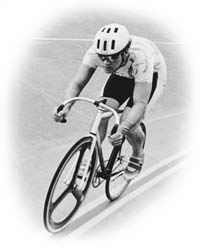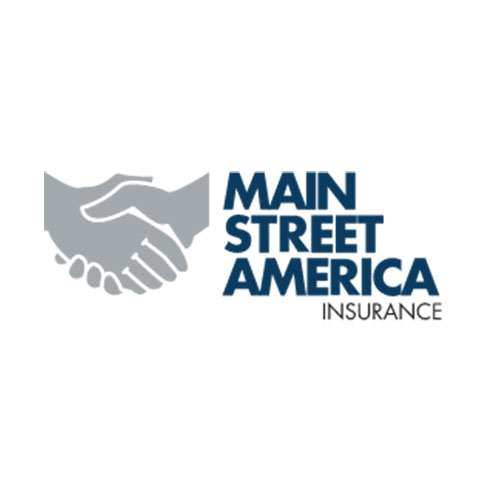
Most bicycling safety rules are really just common sense. Riding smart is the best way to avoid bicycling accidents.
Bicycling Safety Rule #1 Wear a helmet
Whether or not a motor vehicle is involved, there are a number of "rules of the road" which will help prevent many bicycle accidents and/or lessen their severity. But following just this first prevention rule can protect you more than any other: Wear a helmet.
Finally, follow these important helmet tips:
- Wear the helmet flat atop your head, not tilted back at an angle.
- Make sure the helmet fits snugly and does not obstruct your field of vision.
- Make sure the chin strap fits securely and that the buckle stays fastened (no combination of twisting or pulling should remove the helmet from the head or loosen the buckle on the strap).
- Do not use a helmet after it has been involved in an accident. Damage to the helmet may not be visible to the untrained eye. Even very small cracks in the helmet may greatly reduce a helmet's effectiveness in preventing injury. Either destroy the helmet and get a new one or have it inspected by the manufacturer.
The manufacturer will tell you if the helmet needs to be replaced. - Know the law in your state. Many states and localities began adopting mandatory helmet laws in 1987. For information on helmet laws by state and local jurisdiction, visit the Bicycle Helmet Safety Institute's website at http://www.helmets.org or call (703) 486-0100.
Rule #2 Ride Defensively
The majority of bike accidents are caused by the bicyclist. Guard against these accidents by looking and thinking ahead. Don't assume the "other guy" (or dog or hole in the road) is watching out for you.
One of the best examples of riding defensively is as near as your own driveway. Nearly 8% of all bicycle/auto accidents happen when cyclists ride out of their own driveways and into the path of oncoming cars. (Similarly, many accidents involve motorists exiting their driveways into a passing bicyclist.)
The best defense for driveway accidents is to always stop before entering a street and scan for traffic. While riding,be alert for emerging vehicles when passing driveways.
Rule #3 Obey All Traffic Laws
Bicyclists must follow the same laws as motor vehicles.
If you want to be safe in traffic you must act like traffic. Likewise, if you commit a traffic offense you can be fined. Ride a bicycle as you would drive a car. Obeying stop signs and stoplights are a must. Over 10% of all bicycle/auto collisions happen when a cyclist runs a stop sign or stoplight. In fact, more accidents happen to those going straight than turning, particularly in residential areas. It sounds simple, but learn to stop at all stoplights and stop and yield signs, regardless of the visible traffic. Scan in all directions (including to the rear where oncoming traffic may be turning) and wait for traffic to clear.
Rule #4 Learn to Turn
Another major accident type involves bicyclists that make unexpected left turns. Turning accidents account for about 10% of all bicycle/auto collisions each year. The major cause of these accidents are cyclists who don't scan to the rear for cars coming up from behind, stay in the right hand lane without gradually moving to the center, or fail to signal their intention to turn. Left-hand turns are the most complicated of all bicycling turns. Depending on the traffic and number of lanes, the left turn is made most safely by starting well ahead of the intersection, moving predictably to the left side of the lane, looking behind you and signaling your intention to move. Turn into the middle position of your new lane and reverse the process to resume the right hand position.
Hand signals are mandatory in most states, as long as gravel or other slippery conditions do not impair riding with one hand. Start signaling 100 feet before you turn by stretching out the arm in the direction of the turn for several seconds. Remember, simply signaling does not give you the right of way or the guarantee that traffic has seen and understood your intention to turn - be defensive.
Rule #5 Be Predictable
The overwhelming majority of biking accidents result from a cyclist doing the unexpected. Maintain as straight a line as possible when riding, signal your intentions and share the road.
Rule #6 Be Visible
In all conditions it's a good idea to make yourself as visible as possible. Many states and cities require bicyclists riding at night to have a white headlight and a red or orange reflector. This is highly recommended, and many cyclists use red rear lights as well. Wearing a helmet adds to your being seen, as does brightly colored clothing.
For nighttime riding use bright lights and reflectors, and wear light colored clothing with reflective tape. Another good tip about riding at night - watch your shadow in the headlights of overtaking cars. If your shadow moves to the right as the car approaches from the rear, this means it is moving left to pass you. If your shadow stays right in front of you, it means the car is headed straight for you. Get out of the way fast!













